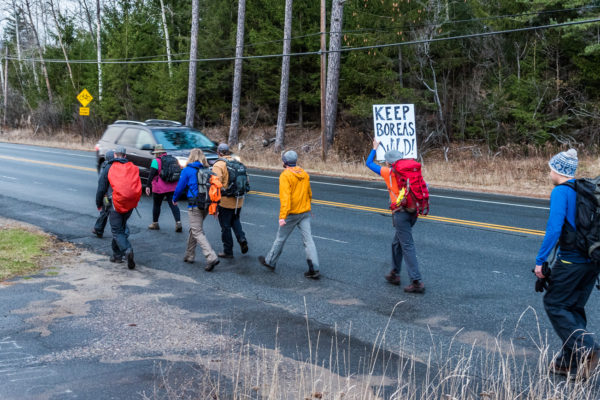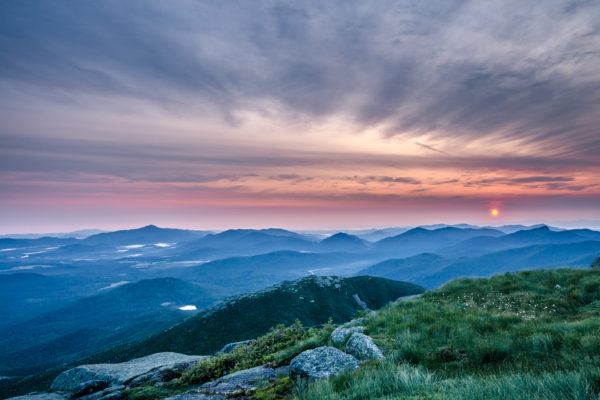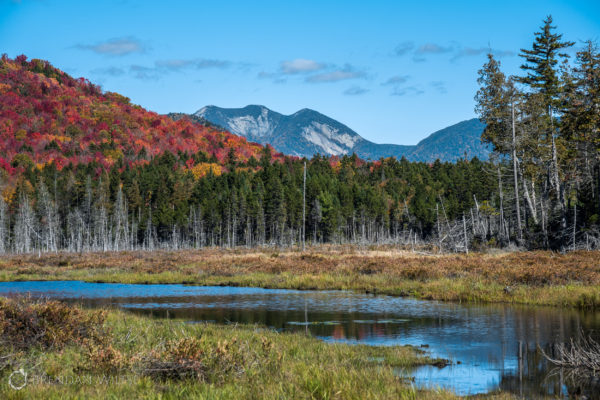In the grand scheme of things, the topic of wilderness preservation in the Adirondacks seems trivial. There are issues of social equality, stability, and toxic practices that, at face value, appear far more pressing. Even though the discussion over what to do with Boreas Ponds centers around one parcel of land in the heart of the Adirondacks, the core of the debate reflects a chilling trend that is emerging in many scenes around the world. Decisions and policy are being made without proper consideration or even convincing public support. Despite an overwhelming volume of comments that supported greater wilderness protections than were originally proposed for the tract, the Adirondack Park Agency (APA) Board will be voting on a classification for the Boreas Ponds tract this week that will shake the foundational wilderness perception we’re familiar with today. This is especially dangerous on the bigger stage, showing that paradigms can be adjusted to reflect the desires of a few stakeholders rather than the whole. What we’re seeing today is the reshaping of a defining feature of the Adirondack Park: wilderness.
I write this today, not simply as a Wilderness Advocate or as a young person who likes to hike, but as a concerned citizen of the Adirondack Park. The idea of protected wilderness was born in the Adirondacks and continues to set the wild lands in New York apart from other places around the country. New Yorkers are often quick to voice praise that they live in the same state as “Forever Wild” land, an accolade given to all public lands in the Adirondacks, not just wildernesses. It is the wilderness lands, though, that see the strongest protections, with man written out of policy definitions. In wilderness, man is just a visitor and the landscapes are dominated by the natural resources the Adirondack Park was created to protect. It pains me to see the fidelity of the wildest of wild places compromised today. The 2B Alternative (map here) for the Boreas Ponds tract is a slap in the face to everyone who has fought to uphold the longstanding legacy of wilderness protection in the Adirondacks. This alternative marginalizes one of the greatest assets to the Park and sets an ugly precedent – that wilderness is a worthy classification, but only if it can be easily accessed. By accepting this alternative, we’re saying that we’re okay with placing a lesser value on ecological factors and a higher value on the unfounded economic mentality of “if we maintain the roads, the dollars will come.”
I applaud Governor Cuomo and New York State for adding the magnificent Boreas Ponds tract to the Forest Preserve. It truly is a once-in-a-lifetime addition. When signing the deal to purchase the Boreas Ponds tract, Governor Cuomo said: “We are leaving our children a better North Country, a better Park than we inherited. And that, my friends, is the greatest accomplishment, an accomplishment that you feel in the places that really matter.” He continued on to say that it is a “moral accomplishment” that the Boreas Ponds tract is now part of the Forest Preserve. Today, reflecting on that sentiment from 2016, I’m inclined to agree. With the reduction of wild places around the country, I do feel it is our moral obligation to preserve what’s left of our wild lands. It is that mindset that will propel New York and the Adirondacks forward into a brighter future, where the benefit of preserving land is not seen in terms of human usage but in terms of ecological integrity. That is not what is happening today. The 2B Alternative directly challenges the wilderness narrative the public supports and mirrors the environmental setbacks we’re seeing on the Federal level.
Federal and Adirondack wildernesses have been the subject of much debate over time. Public perception of the wild lands beyond our front doors has gone through a series of major metamorphoses throughout the years. This is not a new conversation. As our societal values changed, our perceptions of wilderness followed suit. Today, the most common perception of wilderness shadows the Federal Wilderness Act or the State Land Master Plan. The APA is poised to soon rewrite the next change in the wilderness saga. Sometimes change is good, but sometimes it is unnecessary or unjustified. Our guiding document for public lands in the Adirondacks, the State Land Master Plan, unequivocally expresses that the preference in land classifications is given to the protection and preservation of natural resources. By allowing a road through Wild Forest land to pass so close to the Boreas Ponds, the 2B Alternative will bring vehicles into the heart of a remote land, with the intention of the road acting as a catalyst for visitation, which will boost local economies, in theory. Agreeing to the 2B Alternative does not show a preference to the protection and preservation of natural resources.
There are certainly pros and cons to each and every classification. Each case must be examined in its own context. The major issue with allowing traffic into the interior of the Boreas Ponds tract, which would then bisect the parcel, is that it directly undercuts core principles of conservation. Connectivity is something we all may have heard about, but may not fully understand. The wild inhabitants of the Boreas Ponds tract, and other wild places throughout the world, need room to roam, and intact ecosystems to call home. Connecting large parcels of land, such as the Boreas Ponds tract and already existing wildernesses, will allow creatures who are battling a world with shrinking habitat the space they need to survive. The climate is changing, despite all the denial surrounding the topic. Good land management practices will acknowledge that, and do their damnedest to protect the flora and fauna that make this part of New York unique. Without full, intact habitats, some species will not be able to cope with a rapidly changing climate. The 2B Alternative ignores this fact. That is not to say that under a Wild Forest classification, the land would be any less “Forever Wild,” but it would be managed differently, which is where connectivity and management come into play.
Throughout the Boreas public comment period, which concluded at the end of 2016, we heard arguments that pushed for the Boreas Ponds tract to be something more than it is. Whether we chose to believe it or not, the Boreas Ponds tract is large, remote and abuts other wilderness areas, making it a prime candidate for a full wilderness classification. Historic human use of this particular parcel does not mean that it has to continue that way. Development and appealing to specific user groups is not what is outlined in the State Land Master Plan. The APA is not tasked with pleasing particular demographics. The APA should be searching for ways to preserve the wild character that the Adirondack Park was founded upon. A classification that divides the Boreas Ponds tract at arbitrary lines undercuts the merit and allure of wild places. Currently, the percentage of the Adirondacks that is less than 3 miles from a road is miniscule (less than 10%), and opening the road to within 0.1 miles of the Boreas Ponds dam decreases that percentage. This will change perceptions of the Adirondack wilderness experience, when so little space is remote.
Economic arguments have flooded the Boreas Ponds debate, and little attention has been given to the credibility of these claims. Will increased access opportunities really bring more money to local communities? If the numbers in the Essex Chain, with its mixed bag of classifications, are any indication, probably not. The Adirondack Park is not without problems, but classification of one parcel of land is not the solution, especially if that classification seeks to undermine the revered label of wilderness. In his State of the State address earlier in 2018, Governor Cuomo said something to the effect of “Difficult problems don’t get easier if we ignore them.” Boosting local economies is certainly an important issue, but the answers are not deep in the remote sections of the Forest Preserve.
At the beginning of the State Land Master Plan, there is a quote from William Chapman White’s Adirondack Country: “As a man tramps the woods to the lake he knows he will find pines and lilies, blue herons and golden shiners, shadows on the rocks and the glint of light on the wavelets, just as they were in the summer of 1354, as they will be in 2054 and beyond. He can stand on a rock by the shore and be in a past he could not have known, in a future he will never see. He can be a part of time that was and time yet to come.” The act of forward-thinking and planning for a future we cannot see should not be lost in this classification at Boreas Ponds. The 2B Alternative aims to immediately please larger user groups, without acknowledging the future. To cement this current APA Board in Adirondack history, an act of forward-thinking is necessary, so that future generations can continue to experience the land as it was in 1354 and how it can be in 2054.
Faced with facts and personal biases, the APA must make a decision. I hope, for the future of the Park, that the Board takes a holistic view of the process and of the land within the Boreas Ponds tract itself. Remember: the classification process is about determining what the land can withstand, and not about developing a system that divides user groups against each other. One thing is certain: we all love the Adirondack Park and our passion is part of what makes this place great. After the Park was formed, the land within the Blueline was pursued to protect natural resources. May it always be that way, now and in 2054 and beyond.



